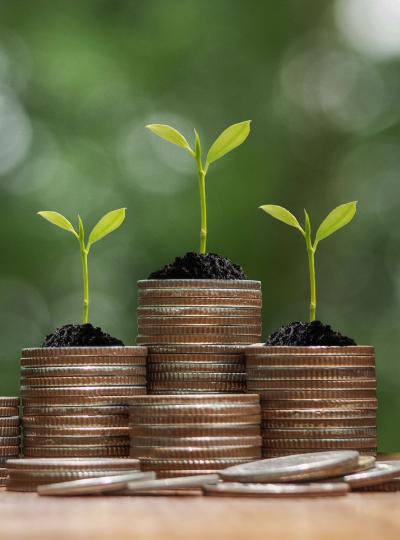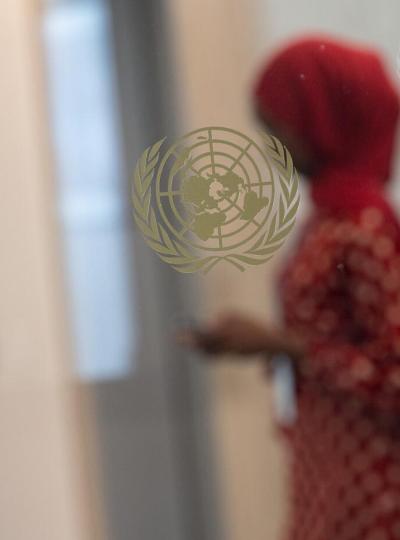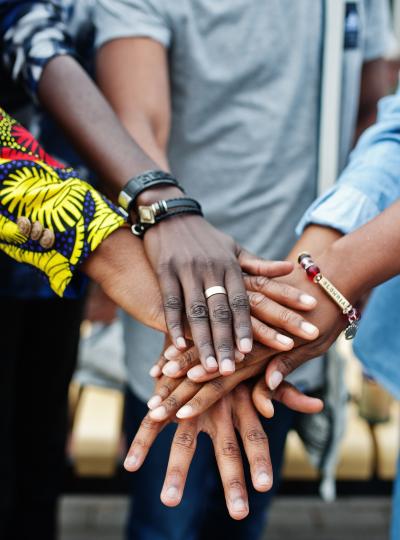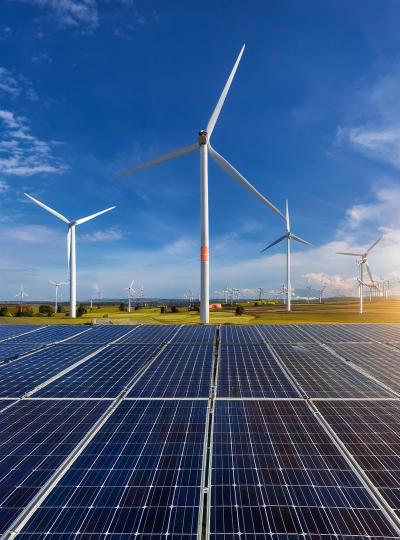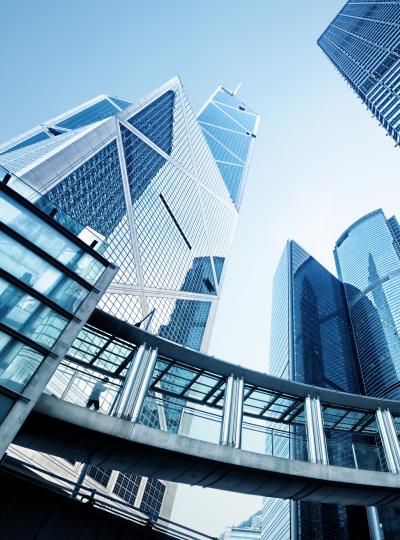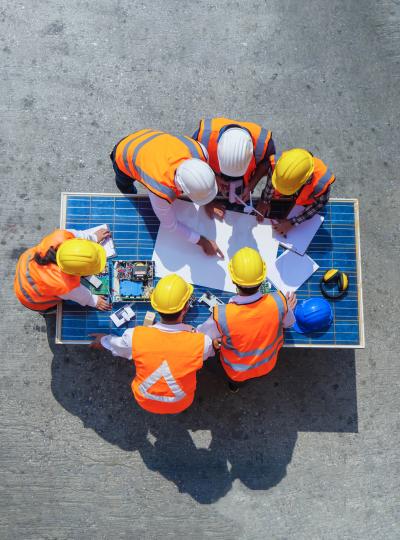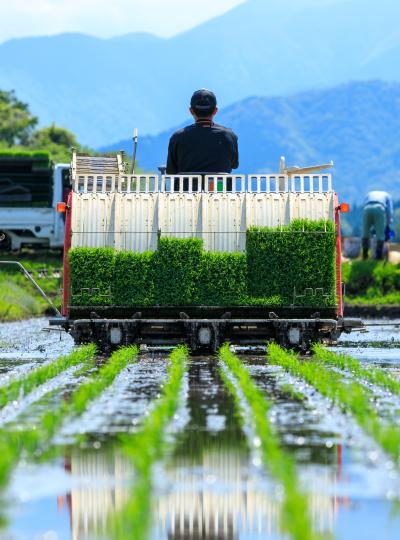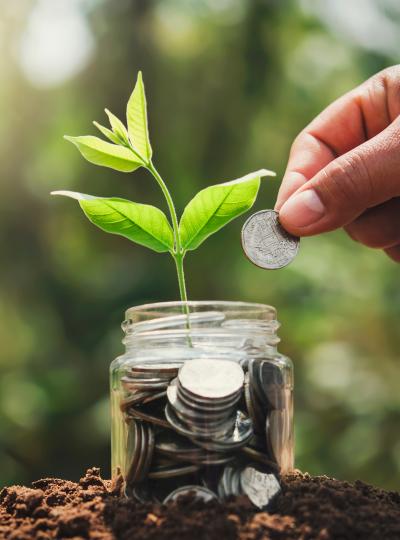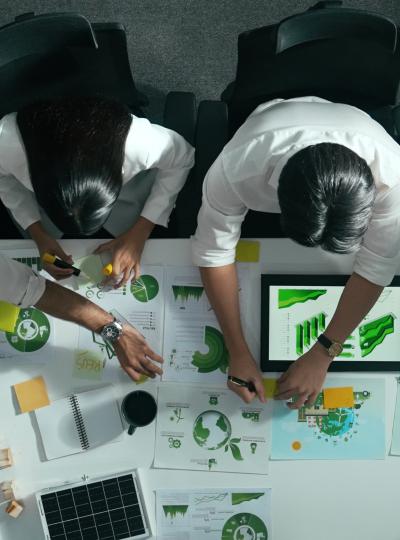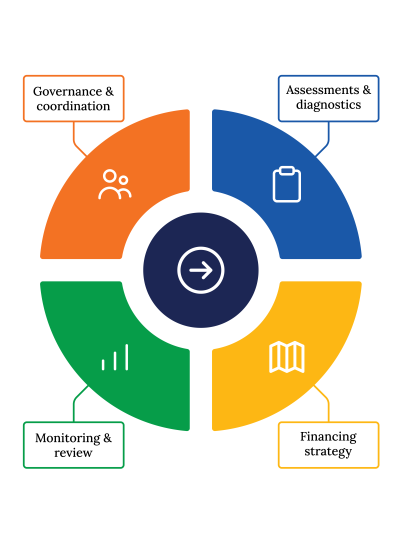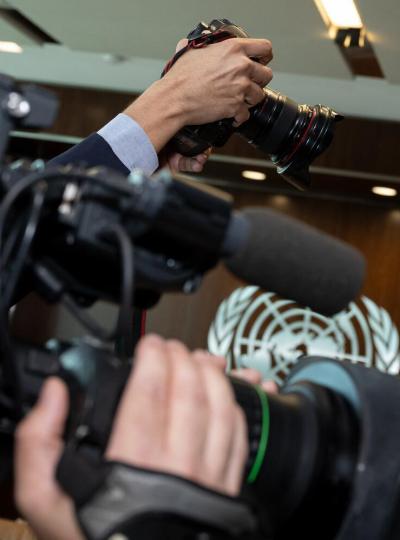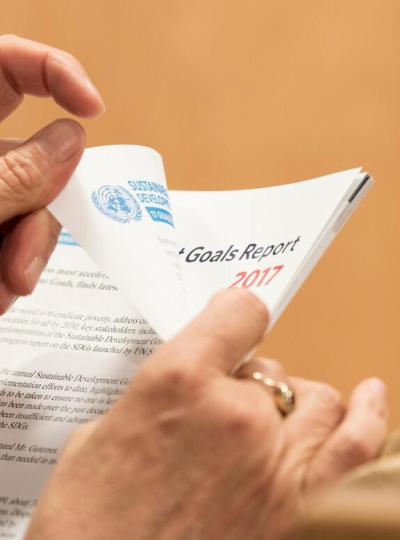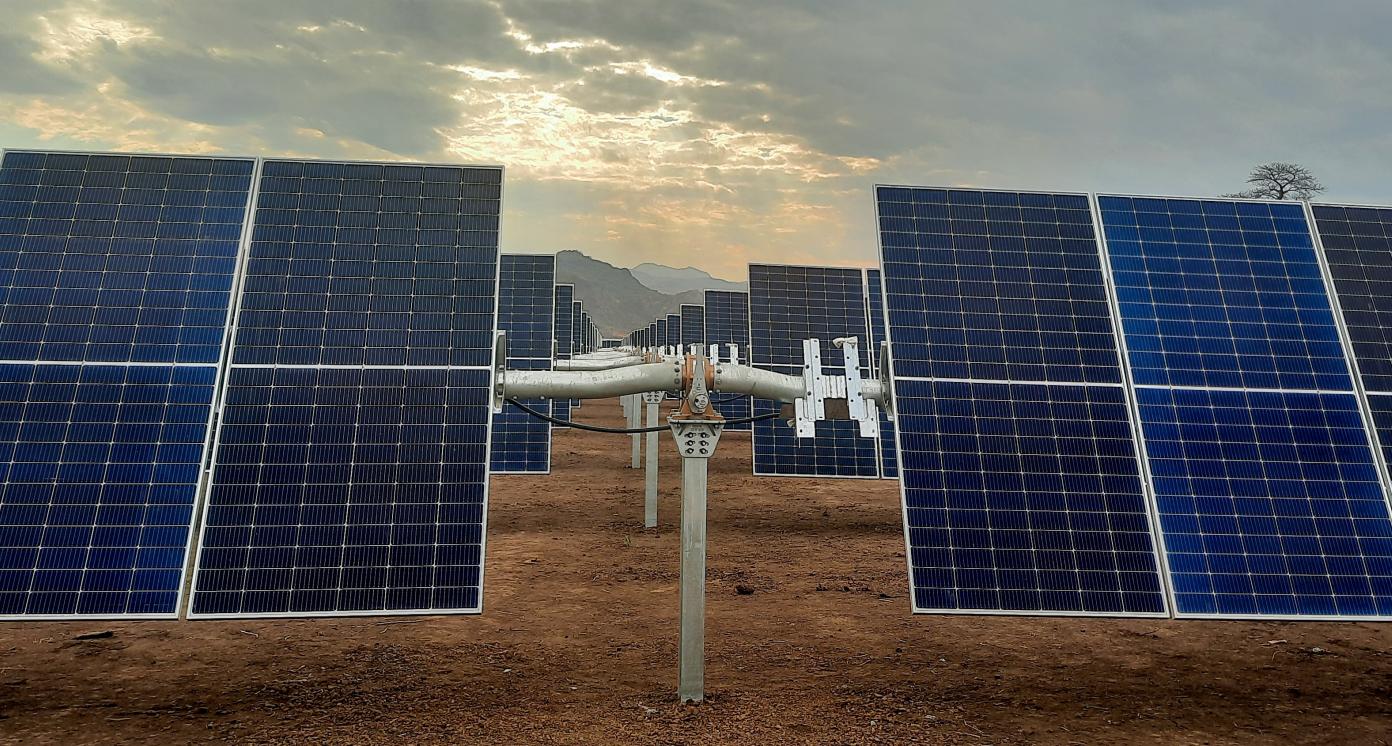Utility-Scale Solar Farms
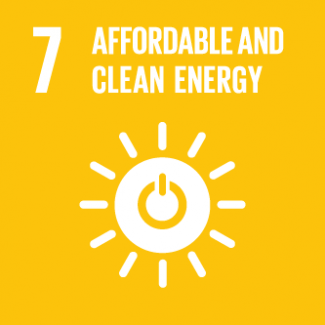
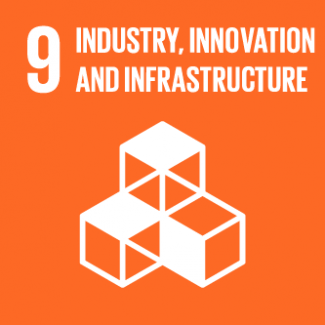
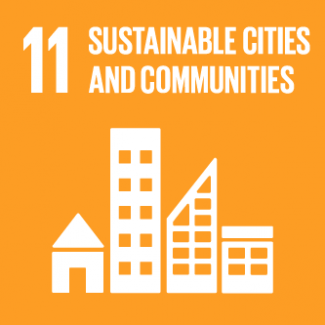
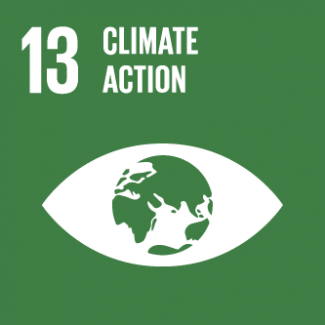
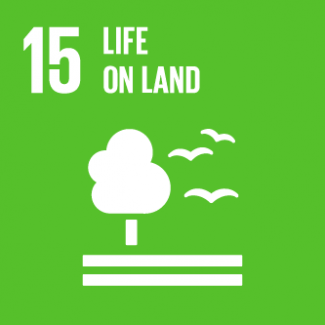
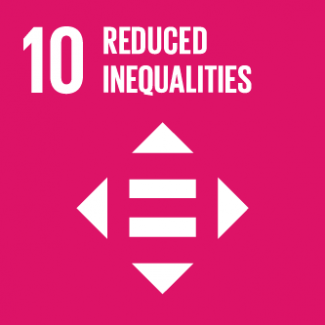
Business Model Description
Invest in the construction of solar farms, either to operate them as an Independent Power Producer (IPP) or through a Joint Venture and sell it to an IPP or public authorities. The solar farm can be operated on a public-private partnership (PPP) basis, with the energy produced sold at a predetermined tariff for a long period, typically 25 years, following a Power Purchase Agreement (PPA). Alternatively, the energy can be sold to agro-industrial clusters located in the vicinity, as well as to neighbouring populations based on the Electricity Code (article 49).
Expected Impact
Cut fossil fuel reliance and CO2 emissions, while meeting Côte d'Ivoire's rising energy demand, and benefiting local populations, especially in rural areas.
How is this information gathered?
Investment opportunities with potential to contribute to sustainable development are based on country-level SDG Investor Maps.
Disclaimer
UNDP, the Private Finance for the SDGs, and their affiliates (collectively “UNDP”) do not seek or solicit investment for programmes, projects, or opportunities described on this site (collectively “Programmes”) or any other Programmes, and nothing on this page should constitute a solicitation for investment. The actors listed on this site are not partners of UNDP, and their inclusion should not be construed as an endorsement or recommendation by UNDP for any relationship or investment.
The descriptions on this page are provided for informational purposes only. Only companies and enterprises that appear under the case study tab have been validated and vetted through UNDP programmes such as the Growth Stage Impact Ventures (GSIV), Business Call to Action (BCtA), or through other UN agencies. Even then, under no circumstances should their appearance on this website be construed as an endorsement for any relationship or investment. UNDP assumes no liability for investment losses directly or indirectly resulting from recommendations made, implied, or inferred by its research. Likewise, UNDP assumes no claim to investment gains directly or indirectly resulting from trading profits, investment management, or advisory fees obtained by following investment recommendations made, implied, or inferred by its research.
Investment involves risk, and all investments should be made with the supervision of a professional investment manager or advisor. The materials on the website are not an offer to sell or a solicitation of an offer to buy any investment, security, or commodity, nor shall any security be offered or sold to any person, in any jurisdiction in which such offer would be unlawful under the securities laws of such jurisdiction.
Country & Regions
- Côte d'Ivoire: Denguélé
- Côte d'Ivoire: Zanzan
- Côte d'Ivoire: Savanes
- Côte d'Ivoire: Vallée du Bandama
- Côte d'Ivoire: Montagnes
Sector Classification
Renewable Resources and Alternative Energy
Development need
Although renewables constitute a more inclusive energy source amid rising national demand and a prevalent energy poverty, production depends mainly on fossil fuels (69% of total). Increases in energy production enabled to triple the share of the population with access to electricity (95%) but the share of renewable energy in the mix, notably hydroelectric, has decreased between 2010 and 2023 (1, 2, 17).
Policy priority
Under the National Renewable Energy Action Plan 2014–2030 the government targets 42% of renewables in the mix by 2030, revised to 45%. It also aims to expand production capacity to 4,000 MW by 2025 and 5,000 MW by 2030. In its NDCs, Côte d'Ivoire pledged to increase electricity production from renewables. Expanding access to energy and renewables is also a central theme of the National Development Plan (Pillar 3) and is a crucial element of Côte d'Ivoire's goal of becoming an upper-middle income country, as set out in its Vision 2030 (3, 4, 5, 17, 18).
Gender inequalities and marginalization issues
While access to electricity has improved, it remains limited in northern areas. Some households in grid-connected settlements do not have access to electricity, and affordability remains a pressing concern. Energy poverty concerns 91% of the rural population (6).
Investment opportunities introduction
Africa's 3rd largest electricity network, Côte d'Ivoire can attract USD 9 billion investments in renewable energy by 2030. Biomass potential equals 16.7 million tons/year from cacao, palm oil, coffee, etc. while solar potential exceeds 1,900 kWh/m². This favors investments at utility scale but also for mini-grid and hybrid applications (7, 9).
Key bottlenecks introduction
Renewable projects are exposed to climatic events such as storms, high winds, floods and landslides which could damage production plants and electricity poles. They also require prior authorization from the Ministry of Energy to ensure alignment with national energy efficiency and sustainability goals, which may involve a lengthy process (9, 19).
Alternative Energy
Development need
90% of the forests have vanished in 60 years, reducing agricultural productivity. Despite grid connection, high costs hamper electricity access, forcing reliance on fuels. Moreover, the country struggles with droughts, uneven water access (67% rural), and poor food market hygiene, exacerbating health risks. Biowaste recycling and green energies could mitigate these issues (4, 11, 12).
Policy priority
The programs "Electricité pour Tous" and "Accès à l'eau potable en milieu rural" aim for universal access to electricity and drinking water by 2025 and 2030, notably through solar-powered water pumps. These include financial inclusion and the installation of 1,200 water infrastructures. The nation plans to increase solar energy production, targeting an 7-9% share in its energy mix, supported by IFC's Scaling Solar program (8, 9, 14).
Gender inequalities and marginalization issues
In Côte d'Ivoire's northern regions, 87% of households use wood for energy due to high electricity costs, intensifying deforestation despite government subsidies for methane gas, which still pollutes significantly. Additionally, water access is closely linked to income, with informal city settlements and remote villages facing severe shortages, worsening their economic and health challenges (10, 12).
Investment opportunities introduction
Côte d'Ivoire supports investment in infrastructure to achieve universal water access by 2030 with a USD 5 billion pledge. The government also supports renewable energy projects such as the Aboisso biomass plant. Additionally, with financial backing from IFC and AfDB, developments such as the USD 400 million Azito power station have been launched (9, 14).
Key bottlenecks introduction
Poor road network maintenance may hamper biomass production, as traffic interruptions can halt operations. Additionally, dust accumulation and storms reduce solar plant productivity. Moreover, local residents may struggle to maintain and replace outdated water pumps, compounded by limited access to finance, especially in villages lacking government support (8, 13, 16).
Solar Technology and Project Developers
Pipeline Opportunity
Utility-Scale Solar Farms
Invest in the construction of solar farms, either to operate them as an Independent Power Producer (IPP) or through a Joint Venture and sell it to an IPP or public authorities. The solar farm can be operated on a public-private partnership (PPP) basis, with the energy produced sold at a predetermined tariff for a long period, typically 25 years, following a Power Purchase Agreement (PPA). Alternatively, the energy can be sold to agro-industrial clusters located in the vicinity, as well as to neighbouring populations based on the Electricity Code (article 49).
Business Case
Market Size and Environment
410 to 900 MW of additional solar PV production capacity by 2030
Utility-scale solar energy production was introduced in Côte d'Ivoire in 2023, with the first plant expected to generate 80MW, the country exerts potential of up to 900MW additional solar capacity by 2030 (62).
Indicative Return
10% - 15%
Benchmark studies In the northern regions of Côte d'Ivoire provide an estimated 11-15% annual return for a 50 MW solar project with an investment cost of about USD 60 million (21).
Benchmark studies in the Economic Community of West African States (ECOWAS) region include a company operating a 25 MW solar plant with a 20-year power purchase agreement in Sierra Leone, which has an indicative IRR of 14.07% for the USD 45 million-project (22).
Investment Timeframe
Medium Term (5–10 years)
Based on benchmark studies from the northern regions of Côte d'Ivoire, a 50 MW solar project has a projected payback period of about six to nine years (21).
Benchmark studies in the Economic Community of West African States (ECOWAS) region include a company from Sierra Leone which, expects a payback period of 5.5 years for a 25 MW solar power plant (22).
Ticket Size
> USD 10 million
Market Risks & Scale Obstacles
Capital - CapEx Intensive
Market - Highly Regulated
Market - Highly Regulated
Market - High Level of Competition
Impact Case
Sustainable Development Need
Côte d'Ivoire's robust economic growth has driven a 6% average annual increase in electricity demand, making the construction of new power plants essential to meet this rising need (21).
69% of the energy production is from fossil fuels in the country. This heavy reliance on oil and gas underpins the majority of CO2 emissions from the energy sector, which are a significant portion of the country's greenhouse gas emissions profile (17, 58).
Recurring power outages have strained various economic sectors. According to information shared by the Confédération générale des entreprises de Côte d'Ivoire (CGECI) in 2024, the mining sector alone has lost USD 8 million due to these outages, which have also impacted the cocoa industry and contributed to an energy deficit of 800 MW (53).
Various agro-processing industries, including sugar and cashew, exhibit high and growing energy needs. They are particularly vulnerable to power outages and use predominantly thermal energies, which have a negative effect on the environment and on public health due to small particle emissions (54).
Gender & Marginalisation
Northern regions are less connected to the national grid. While over 70% of Ivorians live in villages connected to the electricity grid, just 29% of households use it due to last-mile connection costs and energy prices (3).
Even when villages are connected to the national electricity grid, the cost of connecting households to the network can cost up to 200 000 FCFA (USD 330)(three times minimum wage), in addition to conformity checks. This constrains some poor households to keep using traditional energy sources, which are also inexpensive (4).
Air pollution, partly originating from the industry and the energy-production sectors, contributes to the propagation of lung cancer in Abidjan, which concerns 10% of inpatients against 2% in the 1990s (55).
Expected Development Outcome
Investing in utility-scale solar plants will enable Côte d'Ivoire to meet the rising electricity demand, enhancing energy security.
Investments in solar energy contribute to reduce CO2 emission (for instance 27,000 tons are estimated to be displaced annually by a 37.5 MW solar project) (26).
The construction of additional solar power plants ensures a more stable energy supply, limiting losses in energy-intensive sectors.
The development of solar power plants is helping to improve energy supplies to the agro-industrial sector, while reducing CO2 emissions.
Gender & Marginalisation
Solar stations such as the one in Boundiali contribute to lower the price of energy for the local populations, thereby tackling regional inequality.
Increasing electricity production, particularly via solar power, would lower costs for populations, thereby reducing energy poverty.
The production of renewable energy reduces CO2 emissions, air pollution and related illnesses.
Primary SDGs addressed

7.1.2 Proportion of population with primary reliance on clean fuels and technology
7.2.1 Renewable energy share in the total final energy consumption
7.3.1 Energy intensity measured in terms of primary energy and GDP
29% of households had access to non-polluting combustibles to cook in 2018 (27).
31.27% of the energy produced comes from renewables (17).
Côte d'Ivoire's primary energy production per capita was 17.3 GJ or 63% of the African average and 22% of the world average (29).
Multiply by five-fold the number of households using biogas or solar energy and liquefied natural gas for cooking purposes by 2030, from 6.3 million in 2016 to 33,1 million in 2030 (3).
The government's plan for renewable energy (PANER) targets universal access to electricity and 42% of renewable energy in the mix by 2030, revised to 45% (3, 17).
The long term objective for this indicator is to double the global rate of improvement in energy efficiency by 2030 (52).

9.4.1 CO2 emission per unit of value added
The CO2 emissions for the economy were 0.27 kg per USD of GDP in 2017 (28).
The government target for 2020 was 0.117 kg of CO2 per USD of value added (28).

11.6.2 Annual mean levels of fine particulate matter (e.g. PM2.5 and PM10) in cities (population weighted)
The annual mean concentrations of fine particulate matter (PM 2.5) in urban areas was 54.4 µg/m3 in 2019 (50).
The WHO recommended a maximum level of 5 μg/m3 (51).
Secondary SDGs addressed



Directly impacted stakeholders
People
Gender inequality and/or marginalization
Planet
Corporates
Public sector
Indirectly impacted stakeholders
People
Gender inequality and/or marginalization
Planet
Corporates
Public sector
Outcome Risks
If Côte d'Ivoire does not have the adequate infrastructure to manage obsolete solar panels, it may lead to soil pollution and unlawful dumping of toxic waste. Even the recycling of solar panels emits CO2, making solar energy not entirely CO2-neutral (30).
Solar farms require large superficies, which could lead to habitat loss and have a detrimental impact on the wildlife, especially in desert or rural areas.
Solar farms established in arid or very hot areas may overuse water for cooling purposes, which could exacerbate water stress (44).
Gender inequality and/or marginalization risk: If solar farms are built on agricultural land, this may exacerbate food insecurity in vulnerable areas.
Impact Risks
If the infrastructures are not maintained frequently and adequately, production can be short-lived.
If information on sunshine variability between regions and across time is not gathered and exploited, the facilities' long-term performance may be significantly altered (24).
The unavailability or difficulty obtaining spare parts can lower the lifespan of solar equipment, leading to higher costs (43).
Gender inequality and/or marginalization risk: If the capital costs are too high and energy pricing is insufficiently regulated, solar power can be more costly and may raise electricity tariffs, potentially limiting access to energy for poorer communities.
Impact Classification
What
Increased solar power generation improves energy access for households, agriculture and industrial firms, allowing to satisfy growing demand and meet national objectives for renewable energy.
Who
Households and companies operating in energy-intensive sectors, especially in northern regions, would benefit from increased supply.
Risk
Inadequate maintenance, lack of sunshine data, and spare parts shortages can shorten the lifespan of solar equipment and increase costs.
Contribution
Solar energy production replaces less sustainable methods, especially gas and fuel, which could increase in the wake of the new oil discoveries (41).
How Much
The Ministry of Mines, Petroleum, and Energy of Côte d'Ivoire aims to build at least 12 solar power plants with a total capacity of 678 MW by 2030, and 1,686 MW by 2040, and targets 9% of solar energy in the mix by 2030 (60, 61).
Impact Thesis
Cut fossil fuel reliance and CO2 emissions, while meeting Côte d'Ivoire's rising energy demand, and benefiting local populations, especially in rural areas.
Enabling Environment
Policy Environment
The National Renewable Energy Action Plan 2014–2030 (Plan d’action national des énergies renouvelables 2014-2030 or PANER) outlines key objectives for access to clean energy, notably through improved energy efficiency and use of biogas and solar energy (3).
The Scaling Solar program, led by the World Bank Group, assists Côte d'Ivoire in expanding its clean energy supply to reach a target of at least 42% renewable energy by 2030. This initiative, involving two solar power projects with a capacity of 60 MW, aims to improve access to finance for solar projects and deliver affordable, grid-connected solar energy (56).
Côte d'Ivoire's Nationally Determined Contributions stress the development of renewable energies as a key strategy to reduce greenhouse gas emissions. A major objective of the country's revised climate strategies is the reduction of short-lived climate pollutants (SLCPs), such as methane, black carbon, and fine particles (4).
Financial Environment
Fiscal incentives: The new Investment Code sets a discounted VAT rate of 9% on solar equipment (40).
Fiscal incentives: The Investment Code provides fiscal incentives for investments in renewable energies, including exemption from various commercial and profit taxes. It also offers an exemption from patents and licenses contribution and an 80% to 90% reduction of employers' contribution (40).
Other incentive: The World Bank offers support to solar projects through the Scaling Solar programme. It provides a framework for financing and technical assistance to help companies and investors develop solar projects, including large-scale installations (9).
Regulatory Environment
Law No. 2014-132 (Electricity Code of 2014) supersedes the Electricity Law of 1985. This code facilitates private involvement in electricity generation, transmission, distribution, and retailing, thereby dismantling the state monopoly. The code allows independent power producers (IPP) to sell electricity freely to eligible clients without price regulation (39).
Decree No. 2018-258 outlines rules for PPP contracts. It also applies to solar projects, which are procured under a PPP framework. It provides details on procurement procedures, payment terms, remuneration conditions, and contract content (24).
Decree No. 2016-782 outlines the modalities surrounding electricity production, transport, dispatching, distribution and commercialization concessions, including the creation of a dedicated steering committee to supervise the negotiations (20).
Decree No. 2016-783 outlines the regulations applicable to the sale of energy from an independent power producer to the state or eligibility clients (51).
Decree No. 2016-786 outlines the rules applicable to electricity pricing. The sale prices of electricity are set and revised by an interministerial order to ensure the financial balance of the electricity sector, covering the revenues of concessionaires and public service missions (25).
Decree No. 96-894 requires the conduct of an Environmental Impact Assessment for several industries, including energy production (36).
Marketplace Participants
Private Sector
RMT, Companie Ivoirienne d'Electricité, Masdar, AMEA Power, Confédération Générale des Entreprises de Côte d’Ivoire (CGECI).
Government
Autorité Nationale de Régulation du Secteur de l’Électricité (ANARE-CI), Ministère du Pétrole, de l’Energie et des Énergies Renouvelables (MPEER), Ministère de la Salubrité, de l’Environnement et du Développement Durable, Centre de Promotion des Investissements en Côte d’Ivoire (CEPICI).
Multilaterals
World Bank, International Finance Corporation (IFC), African Development Bank (AfDB), European Union (EU).
Non-Profit
Association Ivoirienne des Energies Renouvelables, Kreditanstalt für Wiederaufbau (KfW), French Development Agency (AFD).
Public-Private Partnership
The Bondoukou solar plant was approved in May 2023 on a Public-Private Partnership basis between AMEA Power and the government, allowing the company to develop, finance, build, and operate the plant, with its electricity sold to the Ivorian Electricity Company (CIE) under a 25-year power purchase agreement (48).
Target Locations
Côte d'Ivoire: Denguélé
Côte d'Ivoire: Zanzan
Côte d'Ivoire: Savanes
Côte d'Ivoire: Vallée du Bandama
Côte d'Ivoire: Montagnes
References
- (1) Connaissance des Energies. 2020. Côte d'Ivoire : la principale centrale électrique va être agrandie pour augmenter la production nationale de 10%. https://www.connaissancedesenergies.org/afp/cote-divoire-la-principale-centrale-electrique-va-etre-agrandie-pour-augmenter-la-production-nationale-de-10-200309
- (2) Banque Mondiale. 2020. The secret to cote d'ivoire's electric success. https://www.banquemondiale.org/fr/news/feature/2020/07/23/the-secret-to-cote-divoires-electric-success
- (3) Gouvernement de Côte d'Ivoire. 2016. Plan d'Actions National pour les Energies Renouvelables. https://www.se4all-africa.org/fileadmin/uploads/se4all/Documents/Country_PANER/CO%CC%82TE_D%E2%80%99IVOIRE_Plan_d_Actions_National_pour_les_Energies_Renouvelables.pdf
- (4) Gouvernement de la Côte d'Ivoire. 2022. Contributions Déterminées au niveau National (CDN) de la Côte d'Ivoire. https://unfccc.int/sites/default/files/NDC/2022-06/CDN_CIV_2022.pdf
- (5) Gouvernement de la Côte d'Ivoire. 2021. Plan national de développement PND 2021-2025. https://www.gouv.ci/doc/1646220586PND-2021-2025-UNE-COTE-D-IVOIRE-SOLIDAIRE-RESUME-SYNTHETIQUE.pdf
- (6) Arouna Diallo. 2020. Analyse économique de la pauvreté énergétique. Le cas de la Côte d’Ivoire. https://theses.hal.science/tel-04019370/document
- (7) Jeune Afrique. 2023. Comment la Côte d'Ivoire navigue entre électricité pour tous et ambitions vertes. https://www.jeuneafrique.com/1411441/economie-entreprises/comment-la-cote-divoire-navigue-entre-electricite-pour-tous-et-ambitions-vertes/
- (8) AfDB. 2022. Cote d’Ivoire - projet électricité pour tous – Rapport d’évaluation de projet. https://www.afdb.org/fr/documents/cote-divoire-projet-electricite-pour-tous-rapport-devaluation-de-projet
- (9) IFC. 2018. IFC and Government of Côte d’Ivoire Release Roadmap Towards 2030 Renewable Energy Targets. https://documents1.worldbank.org/curated/en/566921532638485663/pdf/128912-WP-ENGLISH-IVC-Unlocking-private-investment-PUBLIC.pdf
- (10) Sanitation and Water for All. 2019. Côte d'Ivoire Country Brief. https://www.sanitationandwaterforall.org/sites/default/files/migrate_default_content_files/Cote_dlvoire_Country_Brief.pdf
- (11) Afrik 21. 2021. Côte d'Ivoire 90% du couvert forestier a diparu en 60 ans. https://www.afrik21.africa/cote-divoire-90-du-couvert-forestier-a-disparu-en-60-ans/
- (12) Josué, D. et al. 2021. Les inégalités spatiales dans la desserte en eau potable et accès aux logements dans la ville de Divo (sud-Ouest de la Côte d'Ivoire). https://www.researchgate.net/publication/356158628_Les_inegalites_spatiales_dans_la_desserte_en_eau_potable_et_acces_aux_logements_dans_la_ville_de_Divo_sud-ouest_de_la_Cote_d%27ivoire
- (13) Diallo, A. 2022. Analyse économique de la pauvreté énergétique. Le cas de la Côte d’Ivoire. https://theses.hal.science/tel-04019370/document
- (14) Programme social du gouvernement. 2022. Renforcement du programme d'accès à l'eau potable en milieu rural. https://psgouv.ci/v2/welcome/details_sous_menu/renforcement-du-programme-d-accs-l-eau-potable-en-milieu-rural184
- (15) Maillard, T. et al. 2019. Accès à l'eau potable dans les villages de la région de Gbêké. https://shs.hal.science/halshs-02277173/document
- (16) Isaacs, S. et al. 2023. Dust soiling effects on decentralized solar in West Africa. https://www.sciencedirect.com/science/article/abs/pii/S0306261923003574
- (17) Ministère de l'Economie, du Plan et du Développement. 2023. Plan National de Développement 2021-2025. Rapport Annuel 2023. RAPPORT ANNUEL 2023
- (18) Présidence de la République de Côte d'Ivoire. 2020. Résumé du Plan Stratégique - Côte d’Ivoire 2030. https://www.google.com/url?sa=t&rct=j&q=&esrc=s&source=web&cd=&ved=2ahUKEwi4nKu5xYOJAxUqe6QEHT0YCakQFnoECBMQAQ&url=https%3A%2F%2Fdocuments.economie-ivoirienne.ci%2Findex.php%3Fp%3Dfstream-pdf%26fid%3D12%26bid%3D10&usg=AOvVaw2p-ZhmUDLoHni8ydslpsBZ&opi=89978449
- (19) Gouvernement de la Côte d'Ivoire. 2014. Code de l'électricité. https://cepici.gouv.ci/web/docs/code-de-l-electricite.pdf
- (20) Présidence de la République de Côte d'Ivoire. 2016. Décret n° 2016-782 du 12 octobre 2016 relatif aux conditions et modalités de conclusion des conventions de concession pour l’exercice des activités de production, de transport, de dispatching, d’importation, de distribution et de commercialisation de l’énergie électrique. https://www.fao.org/faolex/results/details/fr/c/LEX-FAOC176853/#:~:text=Ivoire%20(Niveau%20national)-,D%C3%A9cret%20n%C2%B0%202016%2D782%20du%2012%20octobre%202016%20relatif,commercialisation%20de%20l%27%C3%A9nergie%20%C3%A9lectrique.
- (21) CEPICI. 2024. Catalogue de projets de la région du Poro. https://cepici.ci/public/frontend/assets/document/invest_in_Korhogo_catalogue_19_janvier.pdf
- (22) West Africa Forum for Climate & Clean Energy. 2021. Financing Project Snapshots. https://www.afdb.org/fileadmin/uploads/afdb/Documents/Generic-Documents/WAFCCEF-3_Project_Snapshots.pdf
- (23) Sika Finance. 2023. Côte d’Ivoire : 30 millions d’euros pour l’extension de la centrale solaire de Boundiali. https://www.sikafinance.com/marches/cote-divoire-30-millions-deuros-pour-lextension-de-la-centrale-solaire-de-boundiali_43709
- (24) Get Invest. 2021. Market Segments - Côte d'ivoire. https://www.get-invest.eu/market-information/cote-divoire/market-segments/
- (25) Présidence de la République de Côte d'Ivoire. 2016. DECRET, N°2016 – 786 DU 12 OCTOBRE 2016, PORTANT FIXATION DES REGLES DE DETERMINATION ET DE REVISION DES TARIFS DE VENTE ET D’ACHAT DE L’ENERGIE ELECTRIQUE, AINSI QUE DES REGLES D’ACCES AU RESEAU ET DE TRANSIT D’ENERGIE. https://anare.ci/download/decret-n2016-786-du-12-octobre-2016-portant-fixation-des-regles-de-determination-et-de-revision-des-tarifs-de-vente-et-dachat-de-lenergie-electrique-ainsi-que-des-regles-d/#:~:text=ENERGIE%20%E2%80%93%20ANARE%2DCI-,DECRET%2C%20N%C2%B02016%20%E2%80%93%20786%20DU%2012%20OCTOBRE%202016%2C,ET%20DE%20TRANSIT%20D%27ENERGIE
- (26) APA News. 2023. Côte d'Ivoire : mise en service de la première centrale solaire en juin. https://fr.apanews.net/cote-divoire/cote-divoire-la-mise-en-service-de-la-premiere-centrale-solaire-fixee-en-juin/
- (27) OECD. 2018. Taxing Energy Use for Sustainable Development - Côte d'Ivoire. https://www.oecd.org/fr/fiscalite/politiques-fiscales/taxer-la-consommation-d-energie-cote-d-ivoire.pdf
- (28) UNIDO. 2022. https://www.unido.org/sites/default/files/files/2022-02/PCP_diagnostics_Ivory_Coast_English.pdf
- (29) EDF. 2023. Une nouvelle étape dans la construction de la centrale biomasse Biovéa. https://cotedivoire.edf.com/actualites/une-nouvelle-etape-dans-la-construction-de-la-centrale-biomasse-biovea
- (30) Economic Times. 2020. Solar photovoltaic not a zero emission source, emit more CO2 than geothermal. https://energy.economictimes.indiatimes.com/news/renewable/solar-photovoltaic-not-a-zero-emission-source-emit-more-co2-than-geothermal-study/73692738
- (31) World Bank & Solargis. 2021. Global Solar Atlas. https://globalsolaratlas.info/map?c=12.897489,-6.064453,5
- (32) Connaissance des énergies. 2022. Côte d'Ivoire : agrandissement de la principale centrale électrique assurant un tiers de la production nationale d'électricité. https://www.connaissancedesenergies.org/afp/cote-divoire-agrandissement-de-la-principale-centrale-electrique-assurant-un-tiers-de-la-production-nationale-delectricite-220627
- (33) Ministère de l'Energie. 2022. Programme national d'électrification rurale et program d'électricité pour tous : le premier ministre Patrick Achi rappelle les acquis. https://www.gouv.ci/_actualite-article.php?recordID=13183
- (34) Gouvernement de Côte d'Ivoire. 2016. Plan Actions National d’Efficacité Energétique (PANEE). https://www.se4all-africa.org/fileadmin/uploads/se4all/Documents/Country_PANEE/CO%CC%82TE_D%E2%80%99IVOIRE_Plan_d_Actions_National_pour_l%E2%80%99Efficacite%CC%81_Energe%CC%81tique.pdf
- (35) La Tribune. 2018. Côte d'Ivoire : une centrale photovoltaïque de 25 MW pour lancer le mix-énergétique. https://afrique.latribune.fr/entreprises/industrie/energie-environnement/2018-06-01/cote-d-ivoire-une-centrale-photovoltaique-de-25-mw-pour-lancer-le-mix-energetique-780415.html
- (36) Présidence de la Côte d'Ivoire. 1996. Décret n° 96-894 du 08 novembre 1996 déterminant les règles et procédures applicables aux études relatives à l'impact environnemental des projets de développement.
- (37) PV. Magazine. 2022. La Côte d'Ivoire s'apprête à mettre en service sa première centrale solaire au sol. https://www.pv-magazine.fr/2022/12/22/la-cote-divoire-sapprete-a-mettre-en-service-sa-premiere-centrale-solaire-au-sol/
- (38) Africa Legal Network. 2023. Projects & Infrastructure Power Guide: Côte d’Ivoire. https://aln.africa/wp-content/uploads/2023/06/ALN-Power-Guide-Cote-dIvoire-1.pdf
- (39) Gouvernement de la Côte d'Ivoire. 2014. Code de l'électricité. https://cepici.gouv.ci/web/docs/code-de-l-electricite.pdf
- (40) Présidence de la République. 2018. Ordonnance No. 2018-646 du 1er août 2018 portant code des investissements. https://tourisme.gouv.ci/uploads/Ordonnance-2018-646-du-01-08-2018code-investissement.pdf.pdf
- (41) Africa News. 2022. Côte d'Ivoire : nouvelle découverte de pétrole et de gaz naturel. https://fr.africanews.com/2022/07/28/cote-divoire-nouvelle-decouverte-de-petrole-et-de-gaz-naturel//#:~:text=La%20C%C3%B4te%20d%27Ivoire%2C%20qui,r%C3%A9serves%20annonc%C3%A9es%20l%27an%20dernier.
- (42) CI-Energies. 2024. Notre engagement dans la transition énergétique. https://www.cinergies.ci/notre-engagement-dans-la-transition-energetique-mix-energetique-energies-renouvelables-perspectives/#:~:text=moyen%20de%2025%25.-,L%27%C3%A9nergie%20solaire%20photovolta%C3%AFque,meilleur%20dans%20sa%20moiti%C3%A9%20nord.
- (43) FAO. 2018. The benefits and risks of solar-powered irrigation - A global overview. https://www.un-igrac.org/sites/default/files/resources/files/The%20benefits%20and%20risks%20of%20solar-powered%20irrigation%20-%20a%20global%20overview.pdf
- (44) Ccinnolab. [Undated]. Floating Solar Farms Could Protect Water Resources. https://www.ccinnolab.org/solarcare/en/SolarAroundTheWorldPost/FloatingSolarFarmsProtectWaterResources
- (45) Gobal Energy Monitor. 2023. Polar solar farm. https://www.gem.wiki/Poro_solar_farm
- (46) AMEA Power. 2022. AMEA Power Expands its Presence in West Africa by signing Agreement with the Government of Ivory Coast to Deliver 50MW PV Solar Plant. https://www.ameapower.com/amea-power-expands-its-presence-in-west-africa-by-signing-agreement-with-the-government-of-ivory-coast-to-deliver-50mw-pv-solar-plant/
- (47) Ministère des Mines, du Pétrole et de l'Energie. 2023. Centrale solaire photovoltaïque de Boundiali : l’inauguration de la phase 1 du projet prévue le 03 avril 2024. https://www.energie.gouv.ci/actualite/centrale-solaire-photovoltaique-de-boundiali-linauguration-de-la-phase-1-du-projet-prevue-le-03-avril-2024
- (48) Afrik21. 2023. CÔTE D’IVOIRE : la centrale solaire de Bondoukou sera opérationnelle dans 15 mois. https://www.afrik21.africa/cote-divoire-la-centrale-solaire-de-bondoukou-sera-operationnelle-dans-15-mois/
- (49) Map Ecology. 2018. La Côte d’Ivoire bientôt dotée d’une centrale solaire de 37,5 MW. https://mapecology.ma/actualites/cote-divoire-bientot-dotee-dune-centrale-solaire-de-375-mw/
- (50) WHO. 2024. Annual mean concentrations of fine particulate matter (PM2.5) in urban areas (µg/m3). https://data.who.int/indicators/i/87345F3/F810947
- (51) European Environment Agency. 2024. European city air quality viewer. https://www.eea.europa.eu/en/topics/in-depth/air-pollution/european-city-air-quality-viewer
- (52) SE For All. 2024. SDG 7.3 - Energy efficiency. https://www.seforall.org/goal-7-targets/energy-efficiency
- (53) VOA. 2024. La Côte d'Ivoire perd 22% de sa production d'électricité en raison de pannes. https://www.voaafrique.com/a/la-c%C3%B4te-d-ivoire-perd-22-de-sa-production-d-%C3%A9lectricit%C3%A9-en-raison-de-pannes/7614616.html
- (54) GiZ. 2023. Efficacité énergétique dans le secteur agro-industriel. https://www.giz.de/de/downloads/giz2023-en-CI-PEP-sektoranaylse-energieeffizienz-agroindustrie.pdf
- (55) Le Monde. 2017. Les Abidjanais victimes des particules fines : à qui la faute ? https://www.lemonde.fr/afrique/article/2017/08/20/les-abidjanais-victimes-des-particules-fines-a-qui-la-faute_5174414_3212.html
- (56) IFC. 2020. Côte d’Ivoire Joins World Bank Group’s Scaling Solar Program to Develop Clean Energy. https://www.ifc.org/en/pressroom/2019/cote-d-ivoire-joins-world-bank-groups-scaling-solar-program-to-d
- (57) Présidence de la République de Côte d'Ivoire. 2016. Décret No. 2016-783 du 12 octobre 2016 fixant les conditions d'exercice et les modalités de la vente de l'énergie électrique produite par un producteur indépendant ou de l'excédent d'énergie électrique produite par un auto-producteur. https://www.dgenergie.ci/fichiers_uploades/files/Decret_n_2016-783_du_12_octobre_2016_fixant_les_conditions_d_exercice.pdf
- (58) Ministère de l’Environnement, du Développement Durable et de la Transition Ecologique. 2023. Rapport National Inventaire. https://unfccc.int/sites/default/files/resource/NIR%20Cote%20dIvoire.pdf
- (59) AIRF. 2022. La Région du Bounkani en Côte d’Ivoire. https://www.regions-francophones.org/actualite/8761/5606-la-region-du-bounkani-en-cote-d-ivoire.htm#:~:text=Le%20Bounkani%20est%20une%20R%C3%A9gion,pour%20soutenir%20la%20production%20agricole.
- (60) PV-Magazine. 2024. La Côte d’Ivoire planifie 678 MW d’énergie solaire. https://www.pv-magazine.fr/2024/04/12/la-cote-divoire-planifie-678-mw-denergie-solaire/
- (61) Le Monde. 2024. La Côte d’Ivoire investit dans les énergies renouvelables sans tourner le dos aux hydrocarbures. https://www.lemonde.fr/afrique/article/2024/04/08/la-cote-d-ivoire-investit-dans-les-energies-renouvelables-sans-tourner-le-dos-aux-hydrocarbures_6226665_3212.html
- (62) PNUD, Clima Capital Partners, Kinomé. 2021. Rapport d’étude du profil risque et de la stratégie de mobilisation des ressources (Version Provisioire).

